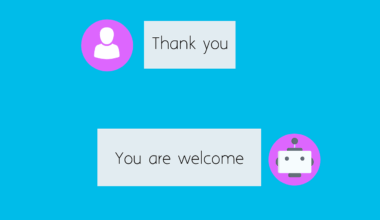Engaging Millennials and Gen Z Through Social Community Ads
In today’s digital landscape, engaging Millennials and Gen Z through social community ads has become vital for brands. These two generations value genuine connections, leading advertisers to alter their strategies. Focus on fostering a sense of belonging rather than merely promoting products. Initiate conversations that resonate with their values, interests, and aspirations. Millennial and Gen Z audiences seek brands that listen and respond to their feedback. Incorporating user-generated content encourages interaction, showcasing your brand’s inclusive culture. Running campaigns that highlight community involvement and charitable initiatives fosters loyalty among these generations. Connecting through storytelling captivates their attention, bringing your company’s mission to the forefront. Use relatable anecdotes to illustrate the brand journey, making it feel like a personal experience. Additionally, utilizing immersive formats such as live videos and interactive polls also enhances engagement and excitement. Targeting local communities allows specific campaigns to gain traction, ensuring relevance and appeal. These strategies create meaningful relationships, allowing customers to become brand advocates. Always personalize the ads, employing insights and analytics to shape your approach effectively. Understanding their preferences is the first step toward long-lasting brand loyalty and community building.
Understanding Your Audience
To effectively engage Millennials and Gen Z, understanding your audience is key. This involves research into their social media behaviors, interests, and values. Surveys and focus groups can provide insight into what resonates with them. Pay attention to popular trends within these demographics, especially regarding social issues and technology. Content should reflect their preferences, adapting to the platforms they frequent most, such as Instagram and TikTok. A deeper understanding leads to crafting targeted messages that stimulate action. Foster community engagement by creating platforms where users can share their thoughts and experiences. Utilize analytics tools to monitor interactions and understand audience behavior. Creating a persona for your typical audience member aids in tailoring content accordingly. As they prioritize authenticity, creating transparent communication channels builds trust. Create relatable content, utilizing humor or cultural references that appeal to them. Collaborate with influencers to reach and resonate more effectively with these groups. Personal connection through stories or experiences creates a sense of community, allowing for genuine engagement. As social media evolves, continually reassess strategies and adapt based on audience needs to ensure longevity and relevance.
Building a thriving online community requires effective strategies and engagement methods. Creating a community around your brand means fostering loyalty while encouraging interaction among members. Begin by crafting relevant and engaging content that speaks to your audience’s interests. This includes sharing updates, behind-the-scenes glimpses, or educational resources. Encourage user-generated content through contests or challenges that invite participation. Recognizing and featuring contributions from your community members promotes inclusion and boosts morale. Host regular Q&A sessions on platforms like Instagram Live or Facebook to connect directly with your audience. This direct communication demonstrates that you value their input and opinions. Utilize polls and feedback form tools to collect input on future campaigns or community initiatives. Always listen actively and be responsive to comments or inquiries. Use these opportunities to clarify your brand’s stance on social issues, showcasing your commitment to values that matter to them. Leverage micro-influencers who align with your brand to amplify your message and build credibility. Creating a supportive and interactive environment fosters a stronger bond, reinforcing the sense of belonging. These strategies enable brands to grow and maintain an active community over time.
Authenticity and Transparency
Millennials and Gen Z crave authenticity and transparency from brands. They are generally skeptical of traditional advertising and are more drawn to genuine experiences. Brands that showcase their values and maintain honest communication build trust and loyalty. Highlighting your company’s mission, history, and values attracts these generations. When sharing your story, embrace vulnerability, and don’t shy away from challenges faced. People connect with stories of perseverance and authenticity. Make your ads relatable by sharing real testimonials that resonate with potential customers. Transparency about sourcing practices, labor conditions, and customer service policies inspires confidence in the purchasing decision. Establish two-way communication channels allowing customers to ask questions and provide feedback. Engaging with concerns transparently also shows you value their opinions. Collaborate with individuals or organizations who align with your brand’s values to showcase commitment. This collaboration allows for cross-promotion and increased visibility to like-minded audiences. Regularly communicate updates or changes concerning products or policies, encouraging dialogue around brand improvements. Through this level of transparency, brands can differentiate themselves in a crowded marketplace and cultivate long-lasting customer relationships.
Utilizing user-generated content is an effective strategy for engaging Millennials and Gen Z. Authentic content created by real users resonates significantly more with these groups. Encourage your audience members to share their experiences through dedicated hashtags or by tagging your brand in their posts. This not only builds community but expands your reach organically. Highlight the best submissions in your advertising or on your social media channels, showcasing a diverse range of voices, backgrounds, and experiences. Emphasizing community aids in fostering a sense of belonging among your audience. Collaborate with micro-influencers who genuinely use your products; their endorsements feel more trustworthy. Create campaigns that revolve around storytelling, inviting users to share their unique brand stories. These narratives enrich your content, providing value while amplifying community voices. Furthermore, actively engaging with comments, questions, or concerns demonstrates that you appreciate their input. This encourages more people to interact with your posts and share their views. Maintaining a responsive presence on social platforms is paramount for building relationships. The culture of sharing within social media means community-driven marketing is the future, necessitating brands adapt accordingly for success.
The Role of Social Media Platforms
Social media platforms play a critical role in community building and advertising strategies. Brands must choose the right channels to engage Millennials and Gen Z effectively. Understanding platform-specific norms and cultures enhances engagement. Visual-centric platforms like Instagram and TikTok cater to younger audiences by prioritizing creativity and authentic content. Consider tailoring your content style to reflect each platform’s audience while maintaining brand consistency. Create shareable content that encourages users to spread the message. For example, developing trends or challenges on TikTok can boost brand visibility and encourage virality. Host themed events or collaborations through social media groups to enhance connection and brand presence. Leverage Instagram Stories or Facebook Events to keep your audience informed and engaged. Utilizing features like stickers and polls build interactive experiences enhancing user involvement. Targeted ads can also help tailor your message to specific demographics, ensuring relevance. Monitor engagement metrics to discover what resonates and adjust your strategies accordingly. Engaging with trends as they arise keeps your content fresh. Consistency regarding posting schedules, styles, and tones reinforces brand identity while making it easier for potential customers to connect.
Finally, to maximize the effectiveness of community building through social advertising, brands must regularly assess their strategies. Conducting regular audits of ad performance highlights areas for improvement. Leverage analytics to understand which content types generate the highest engagement and conversion rates. A/B testing different ad formats can provide valuable insights into audience preferences. Always optimize content based on feedback and metrics derived from analytics, allowing adaptability and continuous improvement. Staying informed about changing trends within these demographics ensures that your brand remains relevant. Foster ongoing community dialogue through open channels inviting feedback, reviews, and suggestions. Seek inspiration from successful campaigns of other brands and analyze what worked. Create a feedback loop to identify challenges and celebrate wins collectively with your community. The essence of community building is maintaining active engagement and ensuring that your audience feels valued and heard. Ultimately, long-term success comes from nurturing and growing these relationships built through authentic engagement and shared experiences. The digital landscape will continue to evolve, but brands that invest in these connections will foster lifelong loyalty.


